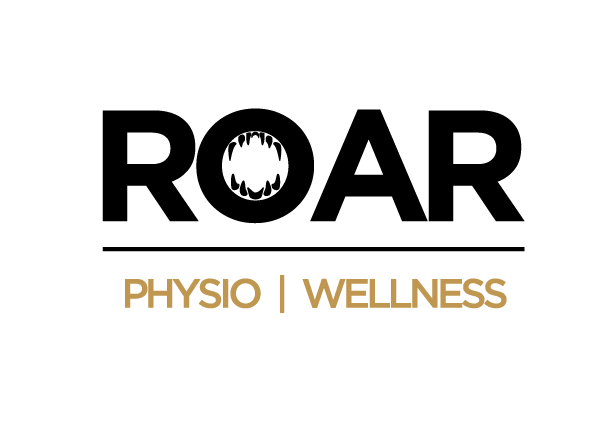Achieving weight loss goals can be challenging, especially without the right guidance and support. Personal training for weight loss combines expert knowledge, personalized workout plans, and ongoing motivation to help you succeed. In this blog, we will explore the benefits of personal training for weight loss, the role of personalized workout programs, and how professional trainers can support your journey to a fitter you.
Benefits of Personal Training for Weight Loss
A personal trainer can help clients determine the best approach to tackling a weight loss goal. The main focus will be on designing a customized program with exercises suitable for the client, but another major element of weight loss is diet. The function of a personal trainer is to address the synergy between a diet plan and exercise program required to achieve the client’s desired results. Here’s how a personal trainer can help you on your weight loss journey:
- Customized Exercise Programs: Personal trainers design tailored exercise programs that fit the specific needs, fitness level, and goals of each client. Regular updates to the exercise regimen ensure continuous progress.
- Diet Plan: Nutrition plays a crucial role in weight loss, and personal trainers provide valuable guidance on creating balanced diet plans that complement exercise routines.
- Motivation: Personal trainers offer constant encouragement and support, helping clients stay focused on their goals. They celebrate small victories, provide positive reinforcement, and keep clients engaged with varied and enjoyable workouts, making the weight loss journey more enjoyable and less daunting.
- Breaking Through Plateaus: Plateaus are expected in a weight loss journey as the body rapidly adapts to changes in calorie restrictions and energy demands. A personal trainer monitors factors that contribute to plateaus, adjusting both the exercise program and diet plan as the weight loss journey progresses in order to minimize the length of that plateau.
Understanding the Role of Diet and Nutrition in Weight Loss
Diet is a crucial aspect of any weight loss program. Put simply, a weight loss program has to increase the overall amount of calories burned compared to calories consumed. Exercise can address the calorie-burning part of this equation but not how calories are consumed. That’s where diet and nutrition come in.
Two key concepts in weight loss nutrition are calorie restriction and macronutrient ratios. Calorie restriction involves reducing the number of calories consumed to create a calorie deficit. Macronutrient ratios, on the other hand, refer to the balance of proteins, carbohydrates, and fats in your diet plan.
Calorie restriction will ensure that the body is burning its own energy reserves (fat) for fuel, and macronutrient ratios will ensure that the body is replenished with sufficient macronutrients such as protein to maintain muscle, support metabolism, and promote overall health.
It is also important to remember that a poor diet can undo any progress made through training and be a setback to reaching a weight loss goal.
Get Your Roar Back
Weight Loss Exercise Programs: What to Expect
With a weight loss program, the goal of the client will be to retain as much muscle whilst gradually lowering overall body fat percentage. This is achieved through a combination of resistance training and cardiovascular exercise. Here’s what a typical weight loss exercise program might incorporate:
- Resistance Training: Resistance training ensures that muscles are amply stimulated and there is minimal loss of muscle mass during the weight loss journey. This typically includes exercises like weightlifting, bodyweight exercises, and resistance band workouts.
- Cardiovascular Exercise: Cardio is a major focus area for a weight loss goal, as the aim of every session is to burn calories. An elevated heart rate at a percentage that gets the client into a fat-burning zone will optimize the energy consumed and how many calories are burned during an exercise session. Cardiovascular exercises such as running, cycling, swimming, and high-intensity interval training (HIIT) are commonly included.
- Flexibility and Mobility: Stretching exercises, yoga, and dynamic movements help improve flexibility and joint mobility, reducing the risk of injury and enhancing overall performance.
- Progressive Overload: Gradually increasing the intensity, volume, or difficulty of exercises over time to continually challenge the body and promote muscle growth and fat loss. This principle involves systematically increasing weights, reps, sets, or incorporating more challenging exercises to prevent plateaus and ensure continuous progress.
How Often Should I Work With a Personal Trainer for Weight Loss?
Generally, the demand for weight loss programs peaks twice a year: following the winter holidays and in the weeks before summer begins. While many people find success with losing weight around these times every year, those who need to lose more weight may benefit from adopting a more regular program and maintaining a healthy lifestyle.
As for the frequency of personal training sessions during the program, most individuals who have a weight loss goal should consider dedicating at least a few sessions every week for at least 12-16 weeks. This will allow enough time for sustainable weight loss progress to be made, as well as addressing any plateaus or setbacks that one may experience.
Tracking Weight Loss: How Personal Trainers Measure Progress
Personal trainers usually employ a variety of methods to track a client’s progress toward weight loss goals. These may include:
- Weighing: The most commonly used way to track progress during a weight loss program is numerically, using a weighing scale and tracking the pounds lost per week. Tracking body weight changes over time is generally the easiest way to measure progress.
- Body Fat Percentage: Body fat callipers are another popular method for measuring progress. As the body continues to shed fat and maintain or even gain a bit of muscle mass, there may not be as drastic of a change on the weight scale, but body composition will change; using callipers to measure body fat at specific points on the body can be a great indicator of progress in that regard.
- Progress Photos: Photos are another crucial part of monitoring progress. There will be noticeable visible changes when comparing photos from early in the program to those from a few weeks into it.
- Strength and Endurance: Improvements in resistance training and cardiovascular endurance are less frequent but can also display progress.
Find Your Best Self
Ready to take the next step in your weight loss journey? Partnering with a personal trainer can provide the expertise and support you need to achieve lasting results. At Roar Physio | Wellness, our experienced trainers are committed to helping you reach your goals through personalized fitness plans and continuous motivation. Contact us today to schedule your first session and start your transformation toward a healthier, more active you!

